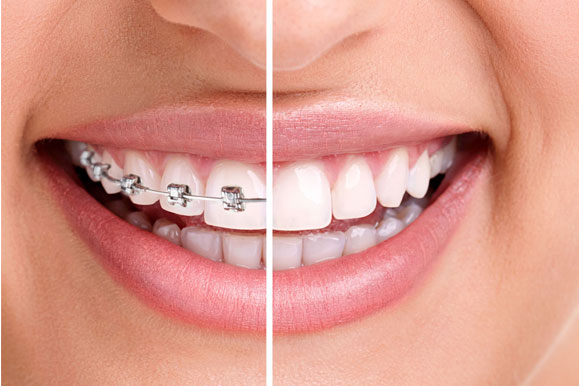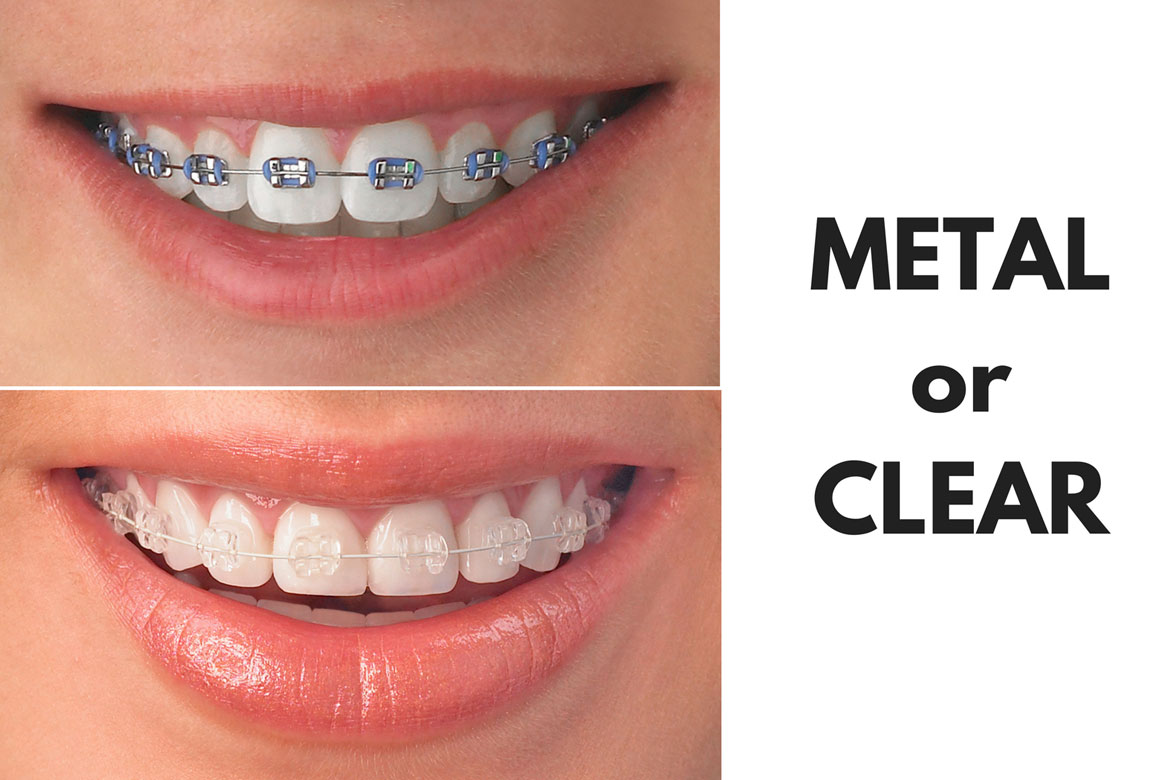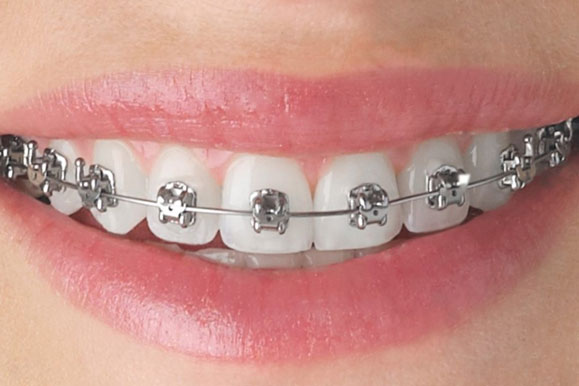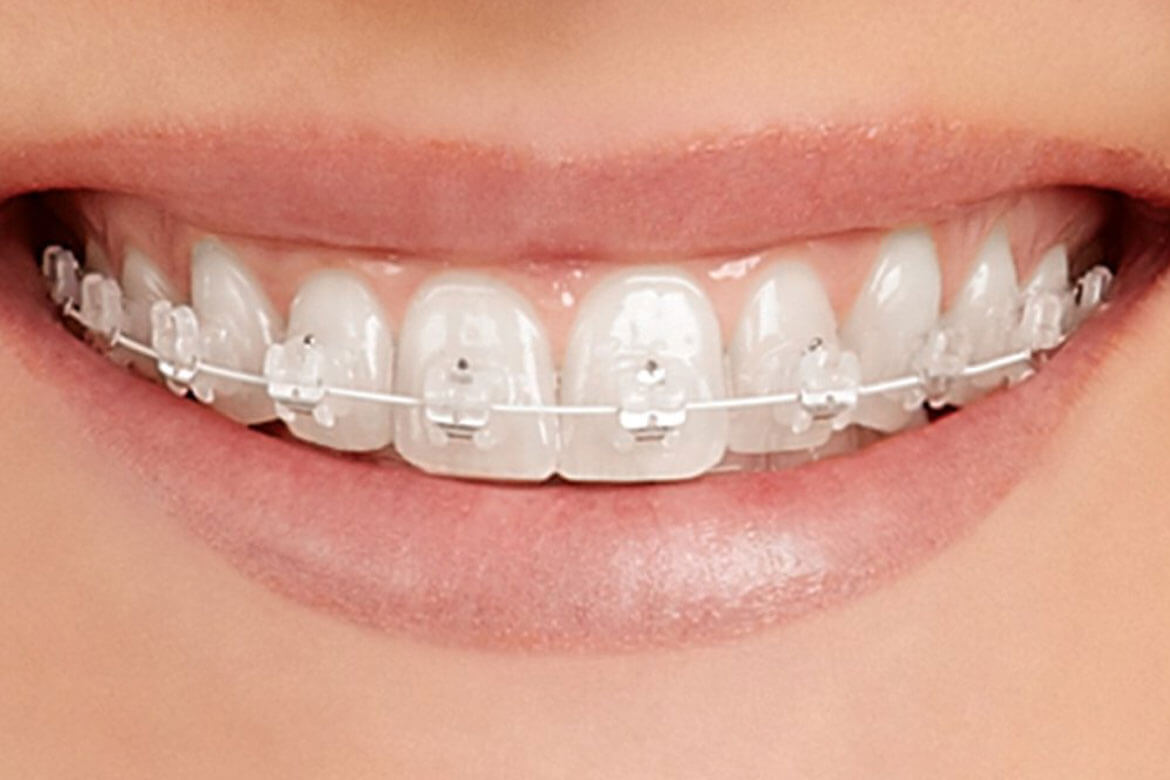
Fixed Braces
"BRACES MAKE HAPPY FACES"Braces are devices used in orthodontics for straightening crooked/irregular/spaced/prominent teeth thus providing a balanced harmony between teeth position and function with the soft tissues surrounding them. It’s the perfect solution for patients who shy away from camera/photographs, and public gestures, are bullied for facial appearance, and an altered speech attributed to teeth mal-alignment. Smile Orchid is here has the BEST BRACES SPECIALIST IN KILPAUK, CHENNAI.
For most people, braces mean a beautiful smile. They help alleviate and prevent long-term health problems. Crooked or crowded teeth are difficult to clean and maintain, which can lead to tooth decay, gum disease, and even tooth loss. A poor jaw or tooth alignment can cause abnormal wear of your teeth, inability to chew efficiently, and excessive stress on gum tissues and bone that supports your teeth. Braces can make your teeth look and work better and easier to clean. Our Orthodontist & Clear Aligner Specialist, USA Certified INVISALIGN premium provider Dr. N. Subash Chandar, MDS, Orthodontics, PGIMER, Chandigarh is one among the BEST BRACES SPECIALIST IN KILPAUK, CHENNAI to help you in all such ways to make your smile beautiful.
BENEFITS OF BRACES- Helps align crooked/prominent/spaced teeth
- Gives a better pleasing & attractive smile
- Helps regain lost confidence and improve personality
- Prevents chances of decay by providing an easy means of clearing debris after achieving regular teeth alignment
- Reduces undue strain on soft tissues (lips, chin) due to more prominent teeth
Braces treatment can usually be started once patients’ permanent teeth until 1st permanent molars have erupted. There is no specified age mark for starting braces as the eruption of permanent teeth varies among children. Usually, the permanent teeth till 1st permanent molars erupt by eleven and a half to thirteen years of age.
UNTIL WHAT AGE CAN I HAVE BRACES?As such there are no such age limits, as long as teeth and the surrounding periodontium are hale and hearty, patients can have braces on. Usually, children aged 16 or below have less dense bone compared to adults. So the amount of anticipated teeth movements in children each month may be a little more and faster owing to their pliable bone and abundant blood supply to teeth and bone compared to matured adults. Even periodontally/medically compromised patients can have braces after proper control of infection/condition. Invisalign & Clear aligners are a special boon
TYPES OF BRACESOur Smile Orchid - BEST BRACES SPECIALIST IN KILPAUK, CHENNAI provides you with two alternate types of braces. They are
1) METAL BRACESThey are the most common type of braces for orthodontic patients. They are cheaper than the other types of braces. They are routinely made of high-grade stainless steel with minute amounts of nickel. For nickel-allergic patients, nickel-free versions of metal braces are also available. Today's metal braces are much smaller, flatter, and more comfortable than in the past. A miniature version of traditional metal braces (LOW PROFILE) is available nowadays. They are very much noticeable when you smile, laugh, or talk. This makes people feel very self-conscious. Those feelings amplify even greater if you have an important event coming up, like a job interview or a wedding.

They are tooth-colored or clear brackets that blend in to the shade of teeth making them less noticeable when compared to metal braces. Although they are expensive compared to metal braces as they are made up of glassy ceramic/porcelain material with strength equivalent to that of metal, these braces make for a better choice in terms of time, money and effort invested. They are more preferred by children and adults as they are relatively less noticeable.
LIGATURES/MODULESThe wire on braces is normally held in place with tiny elastic rubber bands called “elastic ligatures” or “modules”. They are made up of rubber-like elastic polymers which are intended for use in the oral cavity. These are used for both metal braces and ceramic braces. These ligatures can stain in a week’s time which is attributed to the use of turmeric, and masalas in food, smoking, or drinking beverages that typically stain teeth (coffee, wine, tea, etc.), berries, tomato sauce, and curries. Instead of elastic modules, sometimes steel ligature/tie wires are used. These elastic modules are periodically changed in the subsequent appointments.

They have a permanently installed, moveable component like clips or doors to entrap the archwire. Self-ligating braces may be classified into two categories: Passive and Active. These braces are available in metal (made from stainless steel) and ceramic (made from porcelain) forms. METAL SELF-LIGATION BRACES

SELF LIGATION BRACES VS CONVENTIONAL BRACES
Elastic Ligature & Oral HygieneOne of the most significant differences from conventional dental braces is the absence of elastic ligatures or tie wires. Self-ligating braces typically are smaller and more aesthetic since a metal door is required to hold wires in place. They also tend to stand off the teeth further toward the lips and cheeks. Patients with self-ligating brackets have better oral hygiene than patients with conventional brackets.
Treatment TimeSelf-ligating systems boast of shortened chair time and less treatment time than conventional braces systems.
FrictionSelf-ligating brackets produce lower friction during the teeth retraction/space closure stage when compared with conventional brackets. This aids in reduced treatment time..
LINGUAL BRACESAlso known as “inside” braces, these are a teeth straightening treatment system that gained popularity with adults thanks to the fact that they’re practically invisible. They help conceal the treatment as lingual braces are attached to the rear(back) aspect of the teeth rather than the outside, making them invisible when you smile. Lingual braces are available as preformed and also as custom-made for your teeth. Orthodontist takes an accurate impression or digital scan of your teeth, which is then used to create customised wires and brackets that will snugly fit along the line of your teeth and help to gradually move them into the desired position. There may be slight transient slurring of speech and discomfort initially due to interference with tongue movements which improves later within weeks of getting used to them. Custom made lingual braces are preferred as they cause less tongue interference.
WHAT ARE THE POST-TREATMENT GUIDELINES?Braces help in repositioning the teeth. Hence during that time, the teeth would be subjected to force. One has to ensure to maintain the teeth’s positions sturdily with retainers after braces removal as braces can make the gums itchy and also difficult to maintain if retained for the retentive phase. However, there are no further side effects because of braces. After braces are removed, a clean-up of calculus and residual cement used for bonding braces is done followed by polishing of teeth surfaces. Then, fixed retainers are bonded to the rear aspect of the upper and lower front teeth. Impressions are made for upper and lower teeth separately. They are sent to labs for fabrication of hard, clear/transparent removable retainers. After trimming retainers to the gum margin level, they are delivered to the dental office. After a trial, the dentist delivers those retainers to the patient. These retainers are worn full-time except while eating and brushing. They are cleaned every day in the morning with toothbrushes and paste. Don’t worry your BEST BRACES SPECIALIST IN KILPAUK, CHENNAI will guide you and suggest all good ways to avoid future troubles.
How long does it take to recover?It is essential for the wearer to use retainers after braces are done for at least one full year. These retainers help in keeping the shape and position of the teeth unchanged as the moment you stop wearing braces, the teeth can relapse badly. There will be no force once the braces are removed. Hence, retainers help in keeping up with the position and shape of the teeth. They are discontinued gradually after one full year of wearing by wearing it at night time only next 3 months and then every alternate night for the next 3 months. The fixed retainers are left in place till the active growth of jaws gets over or as long as the retainers are lost.
ORAL CARE TIPS DURING BRACES TREATEMNTInculcating a flossing routine is important during orthodontic treatment. Orthodontists and hygienists recommend using interdental brushes or floss threads for easy access to areas in between teeth.
FlossingInculcating a flossing routine is important during orthodontic treatment. Orthodontists and hygienists recommend using interdental brushes or floss threads for easy access to areas in between teeth.
Brushing RoutineBrushing using a soft-bristled orthodontic toothbrush with fluoride toothpaste is recommended for cleaning teeth with braces. Begin brushing at a 45-degree angle at the gum line using gentle sweeps and small circular motions. Then, place the toothbrush on top of the brackets, angling down to brush on top of each bracket, and proceed in a linear manner from one side of an arch to the other side. Finally, reposition the brush below the braces to brush the bottom of the bracket as well as the wire, angling the toothbrush up. In the initial days, it’s better to brush seeing a mirror until proper dexterity has been attained which usually takes 1 week to 10 days. This avoids inadvertent bracket breakage due to careless brushing. Brushing two times a day is advised. Toothbrushes are changed once in two months or more when the bristles fray.
Fluoride MouthwashRinse with a fluoride mouthwash after brushing and flossing to help prevent cavities and white spot formation. Twice a day rinsing is usually recommended.
Mouth GuardsWearing a mouth guard while playing sports safeguards your braces from getting broken. Mouth guards can protect your cheeks and lips from serious cuts and can prevent damage to your braces or orthodontic appliance if you fall down or are hit in the face. These night guards are usually custom-made after the braces are fixed.
ALTERNATIVES TO BRACESCLEAR ALIGNERS
These are orthodontic devices that are transparent, plastic forms of dental braces used to adjust teeth. Treatment begins with taking an x-ray, photographs, a bite registration, and polyvinyl siloxane impressions of the person's teeth and gums. The dentist/orthodontist completes a written evaluation that includes a diagnosis and treatment plan. Dental impressions are scanned in order to create a digital 3D representation of the teeth. Technicians move the teeth to the desired location with the program sequentially, which creates the stages between the current and desired teeth positions. Anywhere from six to forty-eight aligners may be needed. Each aligner moves teeth 0.25 to 0.33 mm.
A computer graphic representation of the projected teeth movements, created in the software program called “ClinCheck”, is provided to the doctor and patient for approval or modification before aligners are manufactured. The aligners are modeled using CAD-CAM (computer-aided-design and computer-aided-manufacturing) software and manufactured using a rapid prototyping technique called stereolithography. The molds for the aligners are built in layers using a photo-sensitive liquid resin that cures into a hard plastic when exposed to a laser. The aligners are made from an elastic thermoplastic material that applies pressure to the teeth to move into the aligner's position. Patients that need a tooth rotated or pulled down may have a small, tooth-colored composite attachment bonded onto certain teeth. More attachments can make the aligners less aesthetically pleasing. Re-approximation, (also called interproximal reduction or IPR and colloquially, filing or drilling) is sometimes used at the contacts between teeth to allow for a better fit.
Each aligner is intended to be worn an optimal 22 hours a day for two weeks. On average, the treatment process takes 13.5 months. Treatment time varies based on the complexity of the planned teeth movements. The aligner is removed for brushing, flossing, and eating. Once the treatment period has concluded, the patient is advised to continue wearing a retainer at night for the foreseeable future. Some available brands are INVISALIGN, CLEAR CORRECT, ORTHO CLEAR, CLEAR PATH, CLEAR BITE, etc. Visit BEST BRACES SPECIALIST IN KILPAUK, CHENNAI – Smile Orchid and go with the happiest Radiant, Celebrity Diamond Smile.
© 2018 Smileorchid.in. Created with by Indiafilings.com